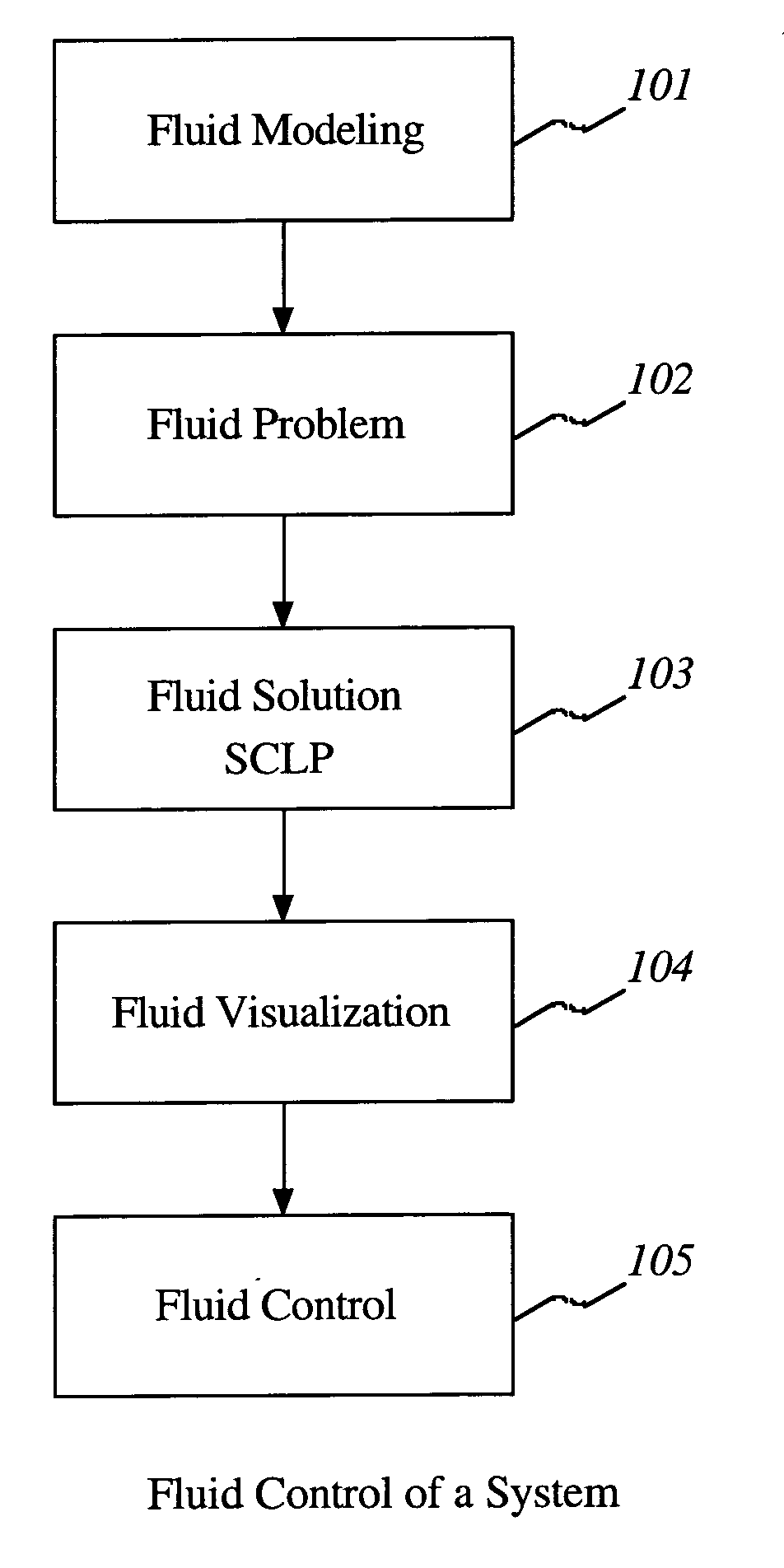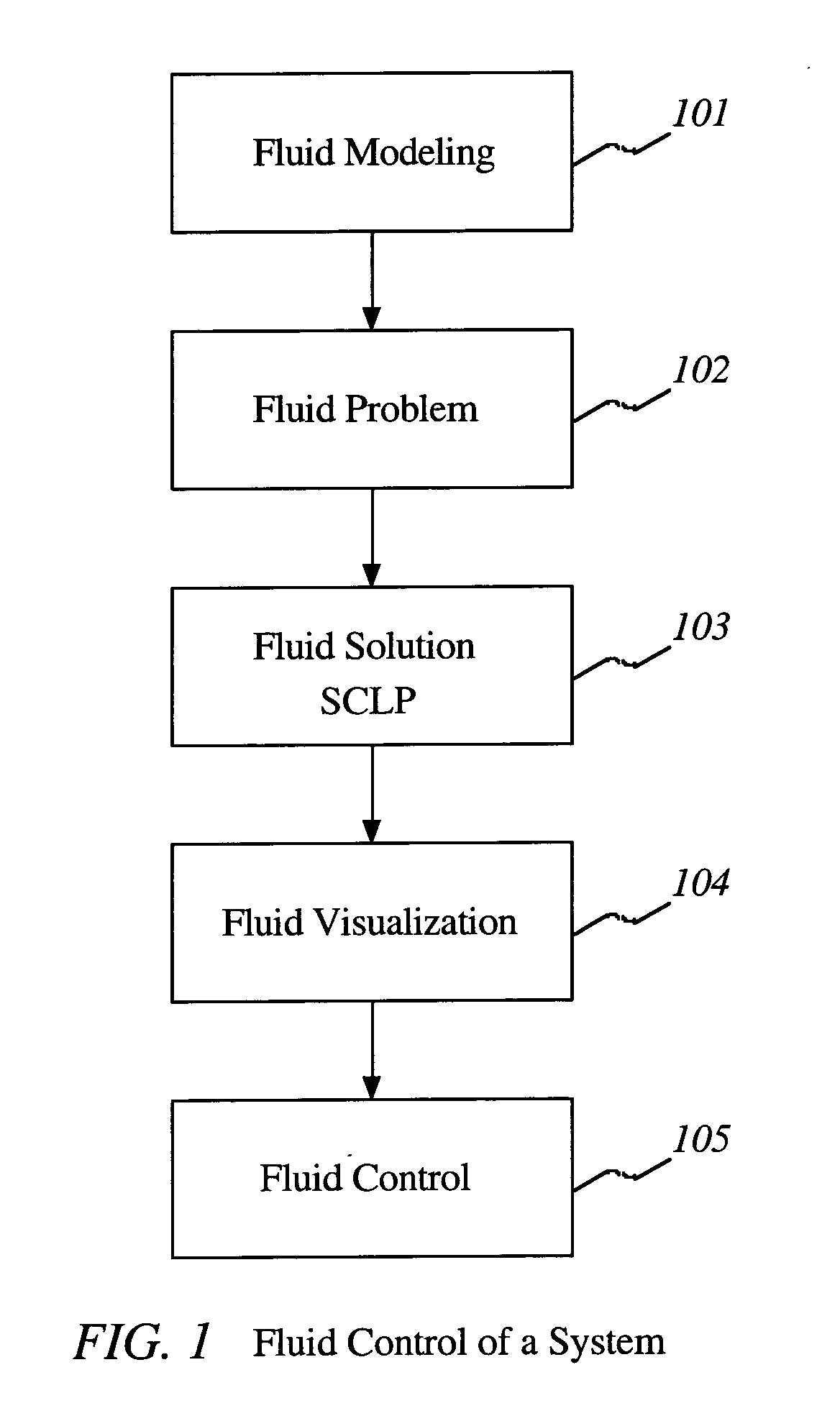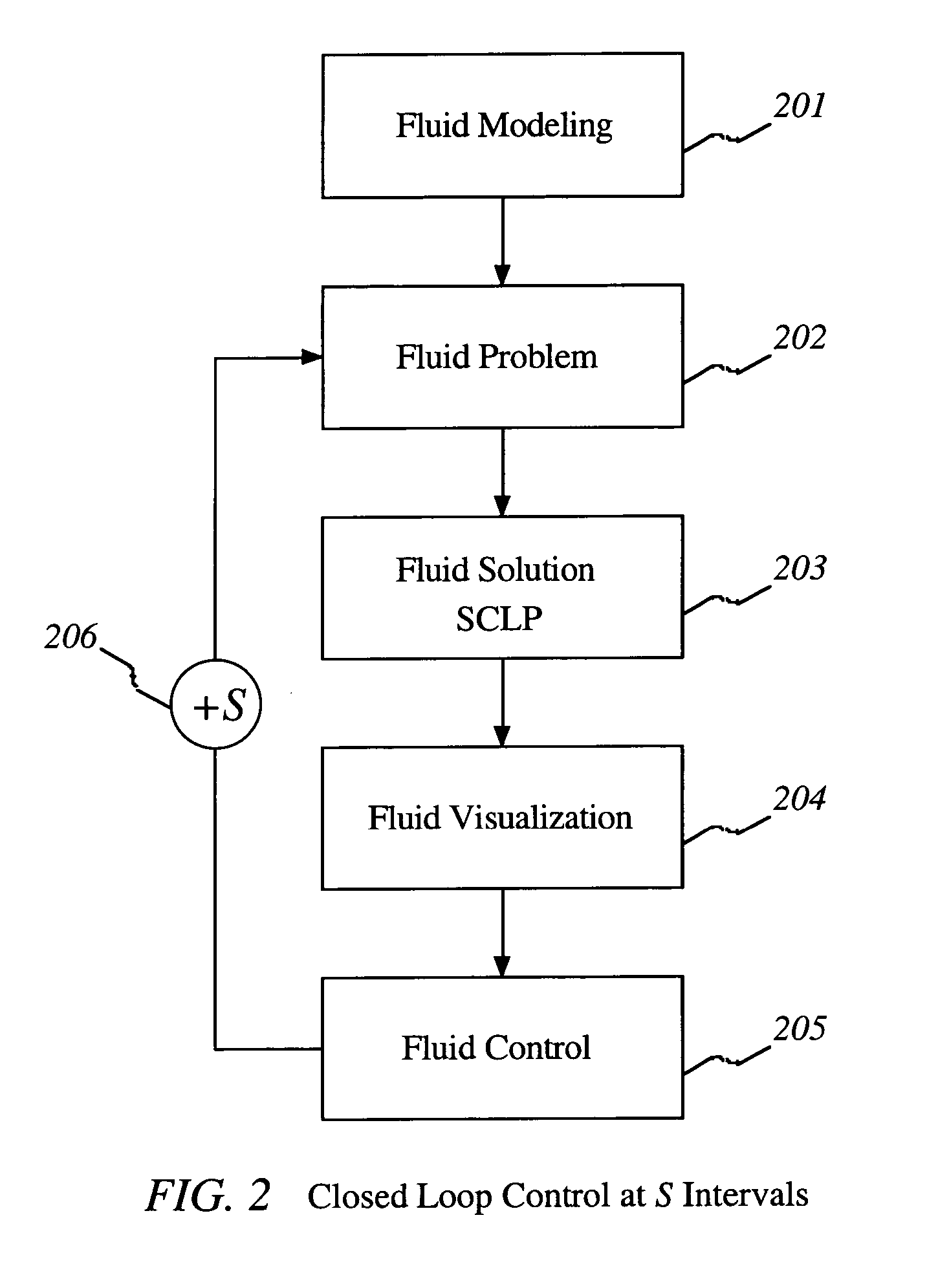Control of items in a complex system by using fluid models and solving continuous linear programs
a technology of complex systems and fluid models, applied in the field of operations research and systems engineering, can solve problems such as inability to find optimal solutions, inability to find optimal controls, and cumbersome methods,
- Summary
- Abstract
- Description
- Claims
- Application Information
AI Technical Summary
Benefits of technology
Problems solved by technology
Method used
Image
Examples
first embodiment
[0084] the fluid modeling stage of our methods and apparatus includes the case when the real system is a manufacturing system. The manufacturing system comprises: [0085] A plurality of machines i=1, . . . , I which are the resources. [0086] A plurality of processing steps, numbered j=1, . . . , J which are the actions. [0087] A plurality of partially manufactured parts which are the items, and each part in process can be classified according to its stage of completion, where stages of completion in the manufacturing process are numbered as k=1, . . . , K. [0088] A particular processing step j is always applied to items in a particular stage of completion k=k(j), and it uses a particular machine i=i(j), for a duration with an average mj. The result of the application of processing step j to a part in stage of completion k(j) is that the stage of completion of the part changes. A fraction Pj,l of the parts in stage of completion k(j) will change their stage of completion to l by the a...
second embodiment
[0095] the fluid modeling stage of our methods and apparatus includes the case when the real system is a city wide traffic system, with centralized control of traffic signals, and with some control over the routing of individual cars by means of signalling and communications with car operators. The traffic system comprises:
[0096] A plurality of road sections and a plurality of intersections connecting the road sections
[0097] A plurality of vehicles, classified by their locations on road sections, and by their destinations
[0098] The fluid buffer levels Xkl(t) approximate the number of vehicles on road section k with destination l at time t. Controls ukR(t), ukD(t), ukL(t) indicate the rate at which vehicles on road section k are directed through intersection to the right, directly ahead, and to the left, respectively. Capacity constraints limit the sum ukR(t)+ukD(t)+ukL(t), and express the allocation of fractions of the time to different directions in the traffic signals.
1.3 Flui...
third embodiment
[0099] the fluid modeling stage of our methods and apparatus includes the case when the real system is a communication system, as embodied in a telephone system or in a internet system. The communication system comprises: [0100] A communication network comprising nodes and links. [0101] Messages, data packets, and files in transit in the system, classified by their route, where a route comprises origin node and destination node, and links along the route.
[0102] Fluid buffer levels xk(t) express total level of messages on route k. Flow rates uk express transmission rate on route k. Resource consumption of flow on route k includes all the links on this route.
1.4 Fluid Modeling of Multi-Project Scheduling
PUM
 Login to View More
Login to View More Abstract
Description
Claims
Application Information
 Login to View More
Login to View More - R&D
- Intellectual Property
- Life Sciences
- Materials
- Tech Scout
- Unparalleled Data Quality
- Higher Quality Content
- 60% Fewer Hallucinations
Browse by: Latest US Patents, China's latest patents, Technical Efficacy Thesaurus, Application Domain, Technology Topic, Popular Technical Reports.
© 2025 PatSnap. All rights reserved.Legal|Privacy policy|Modern Slavery Act Transparency Statement|Sitemap|About US| Contact US: help@patsnap.com



